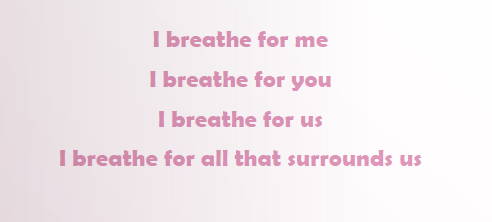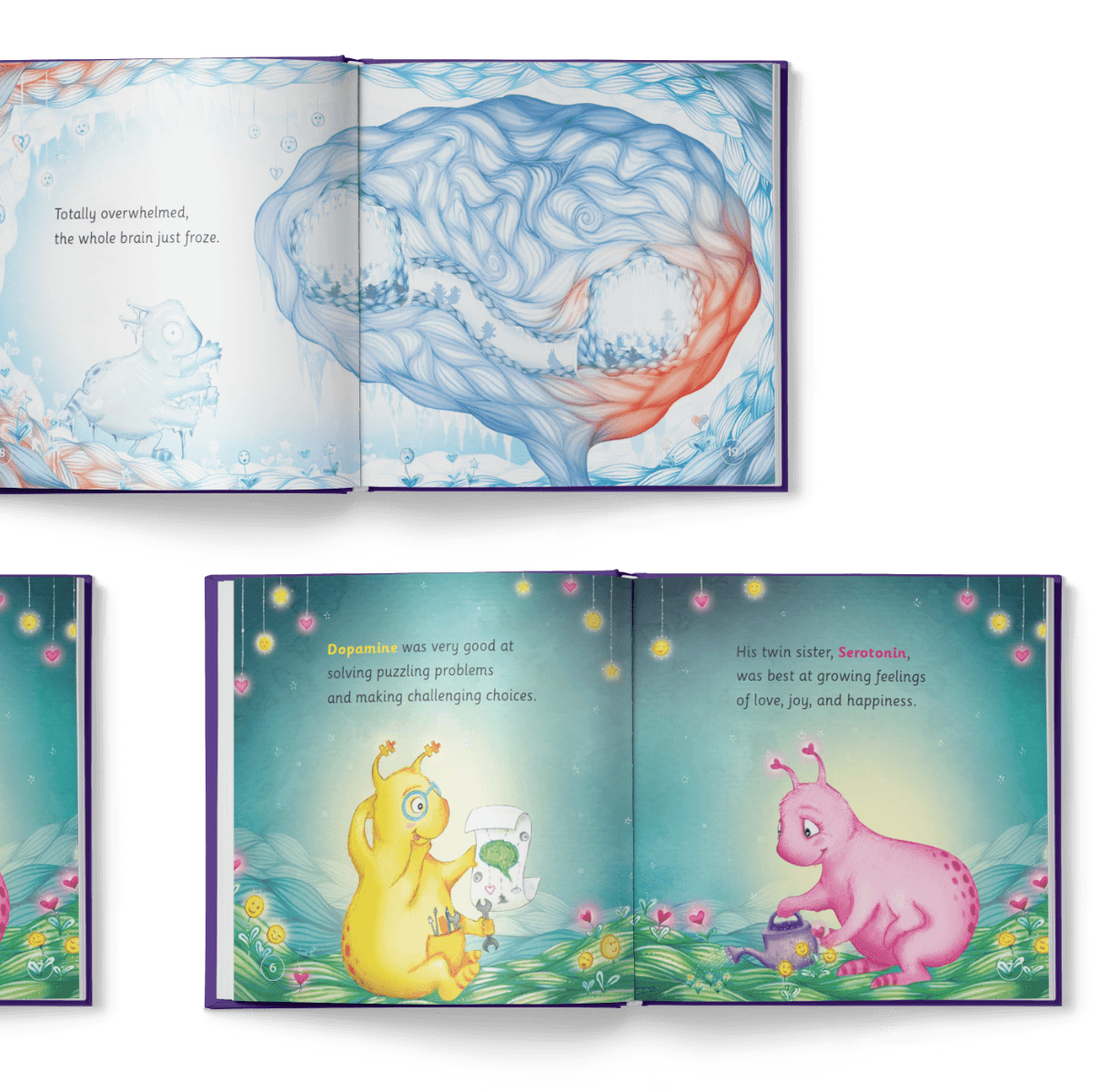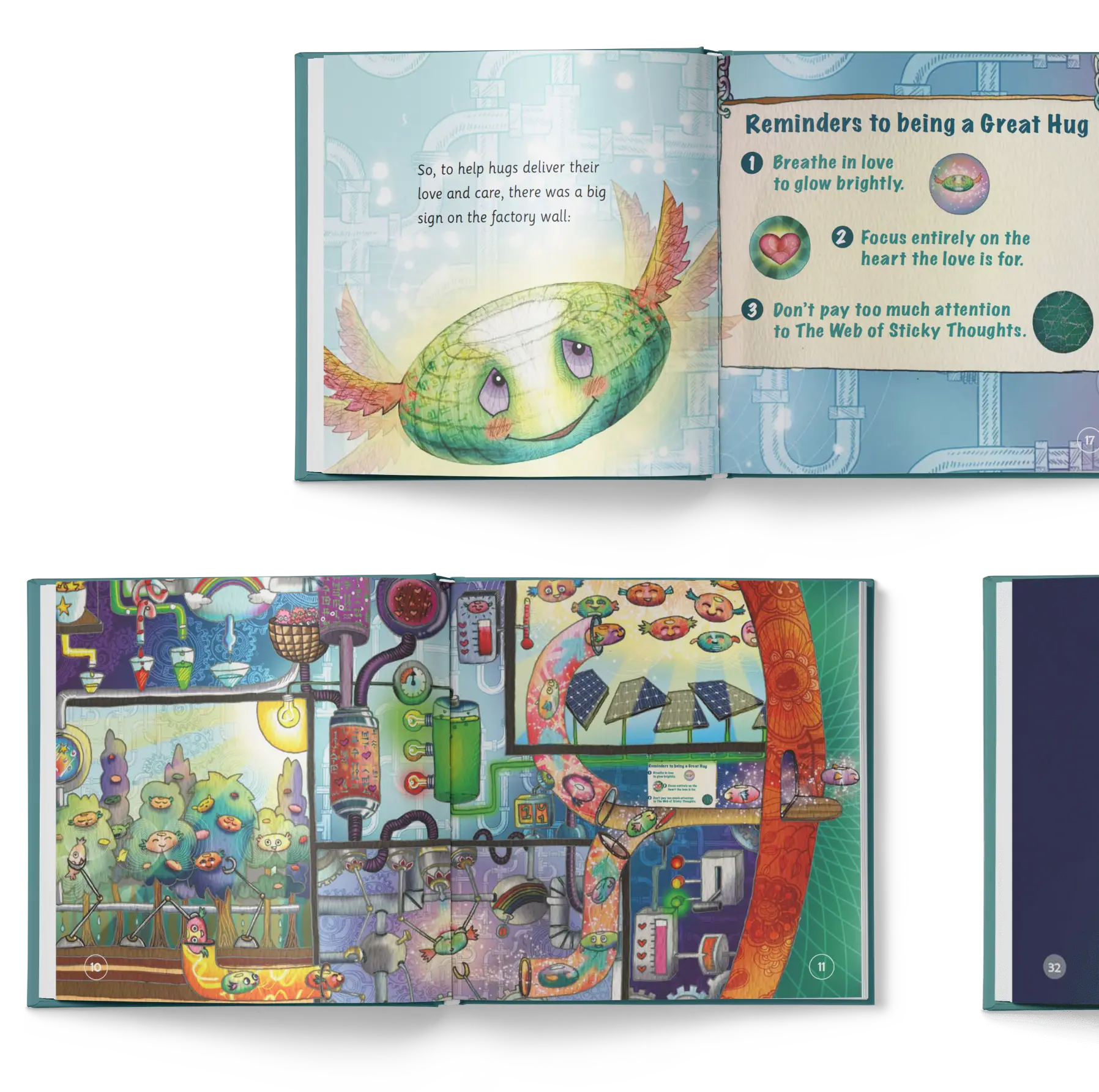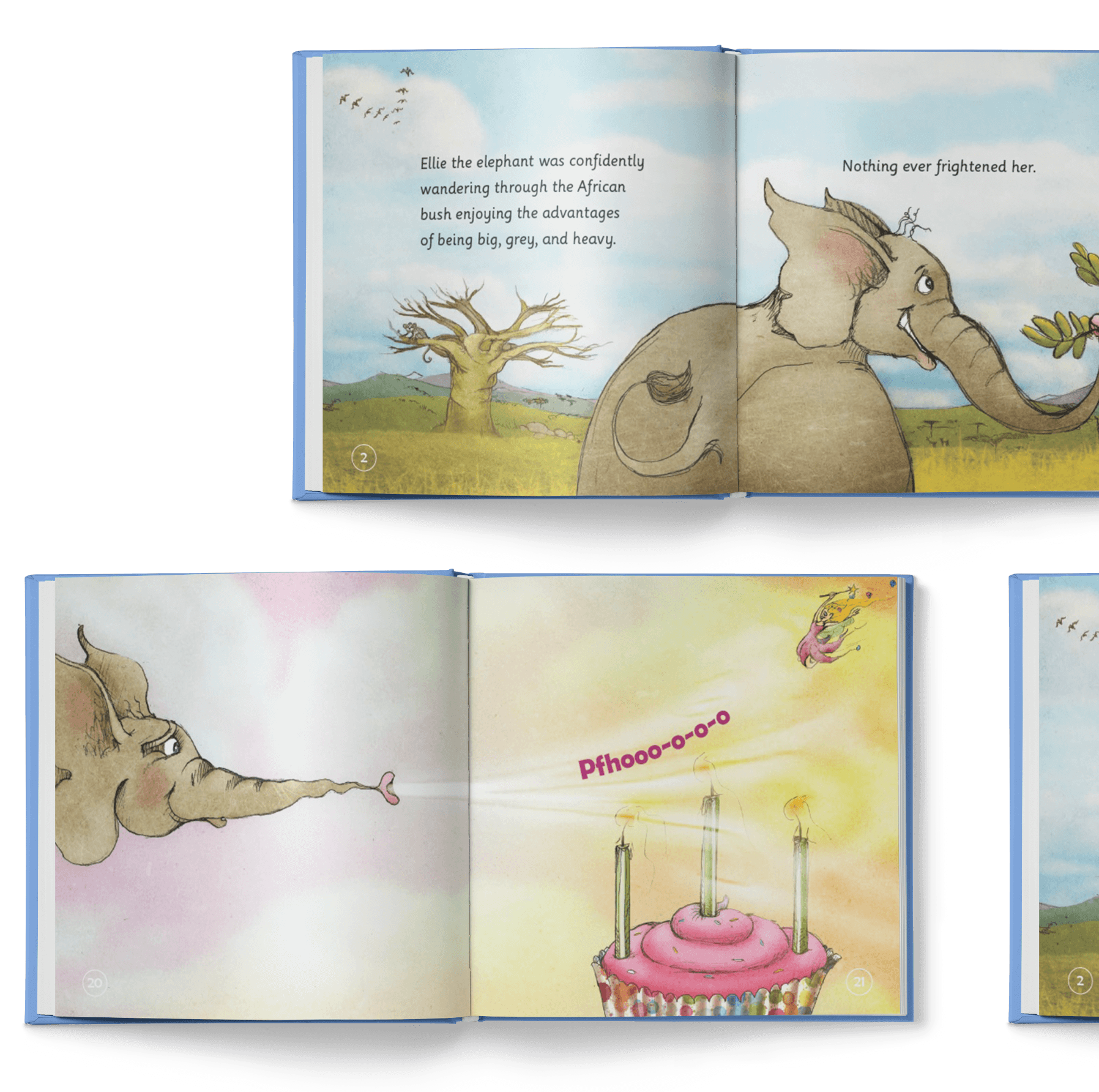
RESULTS:
Fear and Anxiety
Your child scored highest on our group of emotions we label, Fear and Anxiety. Don’t worry, this is a common struggle for many children and there are some really practical ways you can help them grow within these emotions!
First though, to better understand how this works, it is important to note that this grouping is just a label – it is a way to think about the underlying emotions we will explore more in a moment. Fear and Anxiety represent the thread that ties all of these specific emotions your child is struggling with together. It is the underlying emotional core of each of these issues, even if the issues themselves are more specific. So don’t worry about the label (and don’t label your child this way). Instead, let's focus on the core issues and practical methods you can implement to help them get through these emotional struggles.
The issues that fall under the Fear and Anxiety group are: Anxiety, Fear, Calm, Sadness, Safety. Let's explore them in more detail below.
Delve Deeper into the Emotions
Anxiety
Anxiety is a feeling that your child will sometimes have when they worry or feel nervous about things. It's like having a fluttering butterfly in their tummy that makes them feel a bit uneasy. Sometimes anxiety can make them want to hide or avoid certain things, and it can be hard for them to feel calm and relaxed.
Parenting Tip:
As a parent, it's important to understand that it's okay for your child to feel anxious at times. Remember, together you can find ways to cope with the butterflies in their tummy. Taking deep breaths, talking about their feelings, and doing things that bring them calm and happiness can make the butterflies go away. Establishing predictable routines provides stability and reassurance, while using positive self-talk helps keep negative thoughts away. Offering distractions and redirecting their attention can also help them calm down during anxious moments.
Fear
It’s natural for your children to feel fear when they think something scary or dangerous might happen to them. It's like a little alarm inside them that helps keep them safe. Sometimes, fear can make their hearts beat faster and give them a shaky feeling. It can also bring up worries and make their tummies ache. But remember, fear is healthy too. It is important to assess their environment and protect them from real dangers.
Parenting Tip:
We can’t just tell our kids "Don’t be scared" that doesn’t work! But we can hold their hand, invite them to cuddle, remind them it's normal to be scared, and it's a reasonable response (most of the time). It's time to reassure your kids and let them know you will protect them. Wait until they feel safe again so you can talk about it together.
Calm
It's a wonderful moment when you see your kids feeling Calm. It's like they found a cozy spot or are listening to soft music that makes them feel peaceful and relaxed. When they feel calm, their body feels at ease, their breathing becomes slow and steady, and their thoughts become clear and quiet. Kids love to feel calm and peaceful within themselves and harmony in their environment.
Parenting Tip:
When calm is missing, the brain can actually forget that it's even possible. It’s our job to remind them by calming ourselves and holding our center especially when they can’t. We can literally transmit our feelings of peacefulness to their nervous system through our breath, gentle touch, eye contact, and presence. This can take a few minutes before they regulate again, so be patient. It’s very helpful to encourage and support natural moments of calm when they happen. You can say “Your arms are relaxed. Your eyes are closed. You look calm.” At another time you can ask “What does calm feel like to you? What makes you lose it? I will help you remember when you lose it.”
Sadness
Sometimes your child may feel sad, even if it's not obvious on the outside. Sadness can be caused by various things like loss, illness, or simply feeling a bit down. Kids are sensitive so it may be a reaction to a small thing that you don’t even notice. Your child may be trying to figure out why they aren't as happy as they want to be. Look beyond the obvious clues of sniffles and tears for signs of decreased energy, and a withdrawal from connection.
Parenting Tip:
To help, a massive dose of encouragement is necessary. Celebrate them and their activities. Help them understand that it’s OK to be sad – it doesn’t need to be a dirty feeling. But more than anything, just ask a lot of questions so they start getting the thoughts out of their head and into the world to deal with. This will help them to quiet the noise and see that maybe the sadness they feel is actually something else completely .
Sadness
Sometimes your child may feel sad, even if it's not obvious on the outside. Sadness can be caused by various things like loss, illness, or simply feeling a bit down. Kids are sensitive so it may be a reaction to a small thing that you don’t even notice. Your child may be trying to figure out why they aren't as happy as they want to be. Look beyond the obvious clues of sniffles and tears for signs of decreased energy, and a withdrawal from connection.
Solve:
To help, a massive dose of encouragement is necessary. Celebrate them and their activities. Help them understand that it’s OK to be sad – it doesn’t need to be a dirty feeling. But more than anything, just ask a lot of questions so they start getting the thoughts out of their head and into the world to deal with. This will help them to quiet the noise and see that maybe the sadness they feel is actually something else completely .
Calm
It's a wonderful moment when you see your kids feeling Calm. It's like they found a cozy spot or are listening to soft music that makes them feel peaceful and relaxed. When they feel calm, their body feels at ease, their breathing becomes slow and steady, and their thoughts become clear and quiet. Kids love to feel calm and peaceful within themselves and harmony in their environment.
Solve:
When calm is missing, the brain can actually forget that it's even possible. It’s our job to remind them by calming ourselves and holding our center especially when they can’t. We can literally transmit our feelings of peacefulness to their nervous system through our breath, gentle touch, eye contact, and presence. This can take a few minutes before they regulate again, so be patient. It’s very helpful to encourage and support natural moments of calm when they happen. You can say “Your arms are relaxed. Your eyes are closed. You look calm.” At another time you can ask “What does calm feel like to you? What makes you lose it? I will help you remember when you lose it.”
Safety
Safety means that your kids feel protected and cared for. Your little ones experience sensitivity to their surroundings, both physically and emotionally. They may feel exposed or constantly on guard, as if they're waiting for something bad to happen. We want them to feel like there’s a shield around them that keeps them from getting hurt. Then they can be confident, creative and engaged in learning.
Parenting Tip:
To help with Safety, create physical and emotional spaces in which they feel the most protected. Helping them to find their “safe space” is important BOTH mentally and physically. This might mean a regular bedtime ritual that they know will happen, or a safe-space with comforting toys they can go to when fear comes up. The key thing here is all about giving them the reassurance that they are indeed safe and that they have a say in controlling that safety.
Stories With
Purpose
Meet 22 lovable characters who overcome life's challenges to find peace, love, and connection.
We Make Mindfulness Kid-Friendly
Each bedtime story guides you through snuggle-breath meditation, a mindful journey, and conscious conversation.
Our Conscious
Community
The Conscious Bedtime community connects conscious caregivers who seek a richer relationship with their children.
Parents and Children LOVE Our Books!
Help Your Child With The Most Common Emotional Struggles
Over years of research and working with children, we've identified 4 key areas where children commonly encounter emotional challenges as they grow up. Each of these core struggles contains a number of distinct emotions that your children will need to learn about so they can thrive.
Fear and Anxiety
Fear
Calm
Sadness
Safety
Love and Relationship
Relationships
Loneliness
Belonging
Empathy
Connection
Self-Worth
Purpose
Authenticity
Gratitude
Integrity
Anger and Rebellion
Regulation
Shame
Communication
Kindness
Frustration
THE STORY
The Inspiration Behind The Books
The last 20 minutes of each day helps children integrate their day's lessons and experiences, allows them to let go of negativity, and fall asleep feeling safe and loved. Together at bedtime, taking relaxing breaths and discussing the day over a sweet story, you foster a familial sense of belonging and conscious connection that will support your children through the rest of their lives.
Each Book Has Interactive Components to Help with Emotional development, Create Mindful Behavior, and a Deeper Connection with Parents.

Snuggle Breathing
The four simple breaths of the Snuggle Breathing Meditation will help your kids to calm, reset and connect with you as storytime begins.

Core Lesson
These are found on the back of each book so that you know exactly what values you are sharing with your little ones while reading a particular story.

Activity Pages
Each book has an activity page with a little exercise you can do together, to embody the core lesson in the story.

Stickers
In some of the books, you will find stickers at the back of the books to affirm the core lesson in the story through a short affirmation. The kids LOVE these!

Star Counter
With the star counter, the kids can keep track of every time you've read the story to see how many stars you've made shine by coloring the stars in or using stickers.
Purchase Options
MEET THE AUTHOR
Andrew Newman

I love all things creative and spiritual, especially kids! I've now written 22 books that I hope help families connect at the end of those hectic days filled with growing, loving, and learning. I have been training and working in healing and community building for many years which is demonstrated in the amount of detail and attention I've given to each book.
These stories come to me in moments of clear sight and understanding. They feel like a gift to me, and I hope to pass that on to you and yours. Welcome to Conscious Stories!













